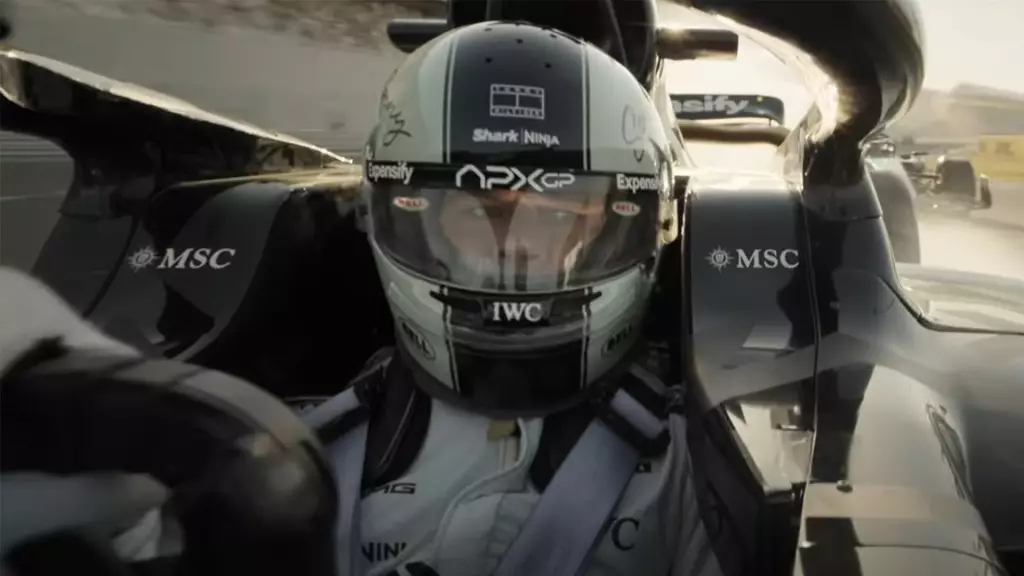Apple Original Films’ *F1*, released through Warner Bros., has taken the box office by storm with an opening that many industry watchers did not see coming. Clocking in at an eye-popping $55 million-plus from over 3,600 theaters, this film has shattered expectations for Apple’s theatrical ventures. Compared to prior disappointments like *Fly Me to the Moon* or *Wolfs*, which barely registered, *F1* is a substantial leap forward, signaling not only potential profitability but a serious appetite for this niche subject matter in mainstream cinema. It raises a critical point: even Hollywood giants struggle to capture niche sports markets—until now.
Despite its impressive numbers, one must resist the temptation to call *F1* a flawless success. With a production budget north of $200 million, and steady but cautious international distribution, the film’s financial outlook, while optimistic, demands close attention. The international appeal of Formula One racing explains its global strength, but this also magnifies the pressure on U.S. audiences to embrace a sport historically overshadowed by NASCAR and IndyCar stateside. Yet Apple and Warner Bros.’ strategy of leveraging social media engagement has undeniably paid dividends, positioning the film alongside mega-franchise contenders like *Mission: Impossible – Dead Reckoning* and *Fast X*—a record few anticipated for an Apple Original.
Marketing Mastery vs. The Cult of Celebrity
The role of Brad Pitt can’t be understated here. While some might argue that the film’s momentum is propelled solely by brilliant marketing, the truth is more nuanced. Pitt’s star power remains a potent magnet, especially when paired with high-octane production values courtesy of veteran producer Jerry Bruckheimer and director Joseph Kosinski. The fact that this marking is now potentially Pitt’s second-best opening as a leading man, only behind *World War Z* from 2013, underscores his lasting appeal even in an era of streaming dominance.
Nonetheless, the film’s 30% share of the coveted 13-24 demographic reveals its surprising youth appeal, a factor historically problematic for Formula One in broader American culture. It is here, in courting younger adult demographics, that *F1* may have scored an unlikely win, positioning itself far from the typical “older skew” films that saturate arthouse and adult dramas.
The Apple Initiative: Innovation or Overhype?
Apple Original Films’ successful theatrical premiere momentarily quiets critiques about the tech giant’s movie priorities. Previously, Apple Original content stumbled with lukewarm public interest and weak box office results. Compared to films like Martin Scorsese’s *Killers of the Flower Moon*—which, despite its awards buzz, only amassed $23 million in its opening and capped out domestically at $68 million—*F1*’s numbers are not just better, they’re transformative.
Of course, one must remain skeptical about the lavish marketing spends that have set the stage for this success; Warner Bros. reportedly covered 50% of the print and advertising (P&A) tab. To many, this smacks of a big studio padding Apple’s theatrical CV rather than Apple’s own ability to draw crowds independently. Yet, given that both companies share the P&A risk before distribution fees siphon profits, this collaboration hints at the dawning realization that tech conglomerates cannot simply buy prestige; they must partner wisely to penetrate theatrical markets.
Social Media’s Unheralded Influence on Box Office Traction
One of the most compelling, yet underdiscussed, factors driving *F1*’s success lies in its extraordinary social media footprint. With an aggregate reach of over 845 million—outstripping comparable franchise releases—*F1* has effectively harnessed platforms like TikTok and Instagram, achieving a 62% higher engagement rate than the average action-adventure genre film. This demonstrates a seismic shift in how Hollywood must now approach theater launches, where viral content and late-stage video traffic can ignite ticket sales in ways heavy traditional advertising alone cannot.
This social media dominance highlights a broader truth: the film industry’s survival increasingly depends on integrating digital buzz with theatrical strategy. This is especially true in summer blockbusters when competition demands innovation.
Counterprogramming and the Summer Slump: M3GAN 2.0’s Cautionary Tale
Contrast *F1*’s roaring presence with the underwhelming performance of *M3GAN 2.0*, which opened in 3,112 theaters but barely scraped $10 million amid muted previews. Despite the initial success of the original *M3GAN*, the sequel’s dwindling returns and critical ambivalence symbolize a broader challenge for small-budget horror sequels attempting to carve out space during a crowded blockbuster season.
While costing only $25 million before marketing, *M3GAN 2.0*’s lackluster reception—evidenced by a meager 59% critics score juxtaposed with the original’s 93%—reflects audience fatigue with repetitive gimmicks and an oversaturated horror market. It also exposes the risks of resting on intellectual property without innovation or marketing muscle, a lesson studios ignore at their peril in pursuit of quick profit.
Box Office Ecosystem: Navigating Risk in an Evolving Landscape
Ultimately, *F1*’s impressive opening is a reminder that even large studios and streaming behemoths must be clever and collaborative to succeed theatrically. The film represents a recalibration of what constitutes a commercially viable genre and who the key audiences are. Yet, with its steep $200 million production price tag and intense reliance on social momentum, it also highlights how precarious the theatrical model remains.
Apple’s transition from streaming-first to tentpole theatrical releases is not just a corporate branding exercise; it is a bellwether for how center-right-liberal markets might blend capitalist entertainment imperatives with emerging cinematic tastes—balancing artistry, market strategy, and technology’s disruptive influence. *F1* isn’t just about racing cars; it’s about racing to redefine the business of film itself.

